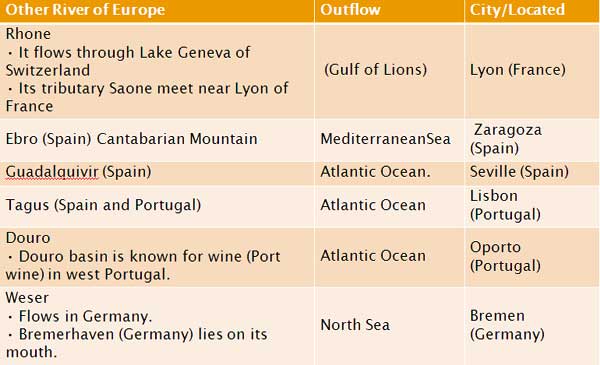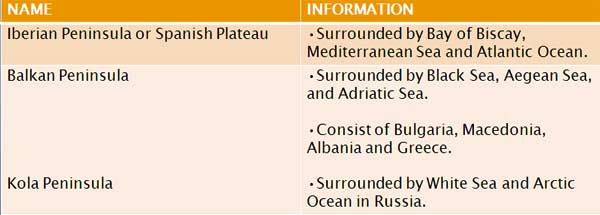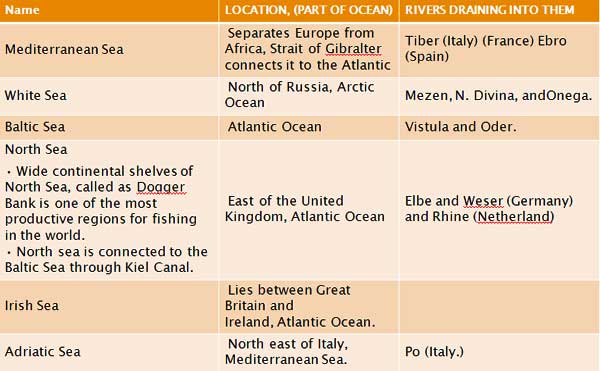NEW! The Gist (APR-24) | E-BOOKS |
(IGP) GS Paper 1 - India & World Geography - "Europe"
Integrated Guidance Programme of General Studies for IAS (Pre)
Subject - India & World Geography
Chapter : Europe
Europe:
- Size : Second smallest continent in the world in area, after America.
- Situation : Europe is situated between Ural Mountains in the east and the Atlantic Ocean in the west, in the west of Asia, and north of Africa. To the north of Europe lies Arctic Ocean, to the south lies the Mediterranean Sea, the Black Sea and the Caucasus Mountains and to the East Ural Mountains and the Caspian Sea.
- Europe and Asia as one common landmass, is known as ‘Eurasia’.
Principal Countries:
Albania, Andorra, Armenia, Austria, Azerbaijan, Belarus, Belgium, Bosnia-Herzegovina, Bulgaria, Croatia, Czech Republic, Denmark, Estonia, Finland, France, Georgia, Germany, Greece, Hungary, Iceland, Ireland, Italy, Latvia, Liechtenstein, Lithuania, Luxembourg, Macedonia, Malta, Moldova, Monaco, Netherlands, Norway, Poland, Portugal, Romania, Russia, San Marino, Slovakia, Slovenia, Spain, Sweden, Switzerland, Ukraine, United Kingdom, Vatican City State, Yugoslavia.
Countries of Scandinavia
Iceland, Denmark, Norway, Sweden, Finland are collectively known as Scandinavia.
For Detail Description, Analysis and More MCQs of the Chapter Buy this Study Notes:
Europe : Physical
Important Gulfs and Bays

Important Seas:
Important Straits:

Rivers of Italy:

Other River of Europe:

Rhine
- Source : Alps (Switzerland), south of Lake Constance
- Outflow: North Sea
- It flows in the rift valley through Switzerland, Liechtenstein, Austria, Gernmany, and Netherlands, where the delta is located.
- From the city of Brussels it turns north and serves as the boundary between France and Germany.
-
Cities located : Mannheim, Ludwig, Shafen, Heidelberg, Wieshaden, Mainz, Dusseldorf, Cologne. Four are on important Rhine tributaries-Essen on the Ruhr, Wuppertal on the Wupper. Frankfurt on the Main, and Stuttgart on the Neckar, Bonn (Germany) and Rotterdam (Netherland).
- The busiest inland water way of Europe.
Important Mountains:
Kjolen Mountain
- Running in north-south direction along the border of Norway and Sweden.
Pennine
- The Central upland region of Great Britain.
Cantabarian
- Mountain chain lying in northern Spain.
- Extends in east-west direction.
Sierra Morena, Sierra Nevada
- The Guadalquivir river drains between these two mountain chains of Spain.
- Sierra Nevada contains country’s highest peak Mulhacean (3,478m).
Mountain Vesuvius
- A volcanic mountain lying in Neples (Italy.)
Appennines
- Mountain chain extending from the western Alps to the southern tip of mainland in Italy.
- An example of limestone hills, which is well known for wine (Asti) in piedmont district of Italy.
Vosges
- Lies in France and separate it from Italy.
- An example of Block mountain.
Alps
- Lies in the south-eastern part of France and separates it from Italy.
- Mount Blanc (4,807 m) is the highest peak of Alps, lies in France.
- The Alps acts as giant watershed in Switzerland.
Mount Etna
- A volcanic mountain of Sicily (Italy.)
- Example of parasitic volcanic cone.
Dinaric Alps
Lies along the north-east coast of Adriatic Sea.
Important Peninsulas:

For Detail Description, Analysis and More MCQs of the Chapter Buy this Study Notes:


